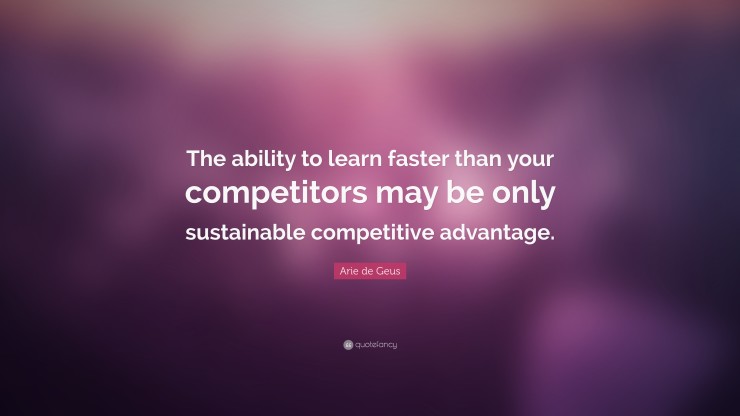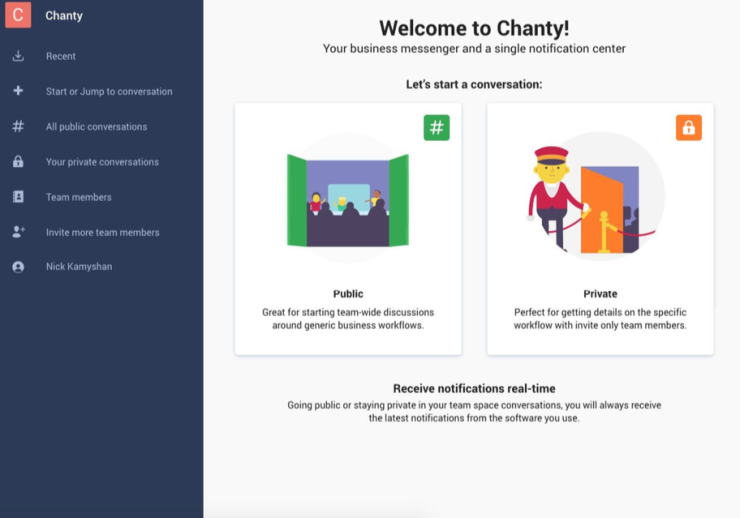We run a SaaS startup. While building Chanty business messenger we’ve learnt that a software itself doesn’t matter unless you have a well-thought-through onboarding process. If you don’t, customers will bounce right before they even get to use your product.
Once the user opens up your app, the relationship between your business and your customer begins. When you meet a new person, it’s the first impression that’s most important. Same rule works for online world as well. If you run a SaaS product you must know this first hand:
Customer onboarding is your chance to make a good first impression.
You’ve worked hard on your product, spent days and nights developing, designing and testing. There’s no doubt in your head that people will soon recognize it as a next big thing.
You are anticipating the moment of truth – the product release. It’s the time, you think, you’ll receive all the appreciation you and your team deserved with all the hard work you’ve been doing for months.
But wait, the users are leaving, failing to convert the way you’ve expected. Desperate to find out what’s causing that bounce rate, you open your analytics tool and here it is – it’s the credit card you are asking users to submit that’s causing the loss.
Or it could be the value of your product that you failed to explain properly that makes them leave. Or it’s the tens of steps and tooltips before customers can actually use your product that drive the irritation and results in churn. Or… it could be one of the hundreds of other reasons.
Again, it’s customer onboarding done right that helps you improve retention and conversion rates. So here we’ve summarized our learnings in 6 actionable tips.
Tip 1: Sign up to use the products of your competitors
Do this long before you start designing your own onboarding process. This will help you see the whole picture of their onboarding flow.
Take a look at your competitors and the way they onboard customers. Mark those little things and moments that you like or don’t like. Maybe it’s a сute illustration or charismatic copywriting that make you feel welcome. There’s no such thing as “not important” when it comes to onboarding process. Everything has to be in its place for your product to build trust and make that unforgettable first impression.
Our team at Chanty has started analyzing our competition a long time ago. Besides using Slack and Slack alternatives for several weeks, we have paid particular attention to the onboarding process of each and every team messaging software.

Onboarding doesn’t end once your customer logged in and started using an app. You may notice some of your competitors keep sending onboarding emails telling more about their features for several weeks.
Therefore, the earlier you become a “customer” of your competitor, the more info you’ll be able to collect and analyze.
But wait…sometimes analyzing your competitors isn’t a good idea. When?
- You are creating a new market and you don’t have competitors (yet);
- Existing solutions are buggy, clunky and your product clearly surpasses competitors.
If this is your case, don’t worry, we’ve done all the research for you. Here come the top sources of knowledge for customer onboarding process:
- A blog article by Groove gives us 10 excellent onboarding examples from the big companies;
- UserOnboard contains tens of reviews with comments on how top notch companies onboard their customers;
- Companies like Smartscreen and Process Street feature useful guides, checklists and strategies on customer onboarding.
- Customer.io blog article helps you find an example of well-written onboarding emails;
- Another article by Groove shares their journey to designing an email flow that works.
- CXL article explains the power of testing different approaches in onboarding;
- Appcues explains the magic of onboarding process in about hundred articles.
Let’s get to work now
When you are done with analyzing competitors and learning more about onboarding process, it’s time to start designing one for your product. If you are in SaaS business you probably know what minimum viable product (MVP) and minimum loveable product (MLP) mean.
If you don’t, I highly recommend to read this article by Laurence McCahill. I believe there should be also a term for a minimum loveable onboarding process (MLOP) as it’s hard to cover all aspects of customer onboarding at once.
Tip 2: Keep your on-boarding process as simple as possible
Design your own minimum onboarding set that is likely to receive positive response from your customers and keep them from bouncing.
These are the four steps we are asking our users to take during the customer onboarding process in our business messenger:
- Name and Email
- Team name
- Confirmation code sent to the email
- Welcome screen and “You are ready to chat” message

Do your best not to require too much information from your users. This could scare them away and they will never get to see your product. Same rule applies to tooltips and emails – make sure to portion them out not to overload your soon-to-become customers.
“Simple can be harder than complex: You have to work hard to get your thinking clean to make it simple. But it’s worth it in the end because once you get there, you can move mountains.”
– Steve Jobs
This quote by Steve Jobs made perfect sense for us after spending several weeks analyzing customer onboarding practices of our competitors. It’s easy to come up with ten steps to unboard customers. It’s much harder to limit them to four.
Tip 3: Design The “Aha!” moment
Your customer has succeeded to patiently go through every step of your onboarding process. The app is opened and ready to use. Here comes the moment of truth – the Aha! moment.
The “aha” moment is the time when a user internalizes the value your product provides. It’s the moment when they’re ready to buy or deepen their relationship with the product.
– Pulkit Agraw: 5 Key Lessons for successful user on-boarding
This is when you should explain the value of your product the best possible way. If you do a good job with this task, your chances for an engaged user increase exponentially.

Don’t make your product tour longer than 40 seconds or more than 5 tips. Make sure users can skip the the tour if they want and revisit it when they are ready.
At this stage, it’s a product tour that will either smoothly guide your customers into using the product and convert them into engaged users or make the customers leave and never come back.
Therefore, the more you test and experiment with a product tour flow, the more likely you are to optimize it for conversions.
What is an engaged user?
According to the article by Richard Price, Facebook’s leading indicator of an engaged user is the user reaching 7 friends within 10 days of signing up. DropBox considers users “engaged” when they put at least one file in one Dropbox folder on one device. As you can see the metrics are quite different and depend on the company and their software, so you’ll have to come up with this indicator for your product by yourself.
Tip 4: One feature at a time
Marketing onboarding emails shouldn’t introduce more than one feature or concept at a time.
Remember that your emails should help, not irritate. Onboarding emails let you explain the value your product delivers by introducing various features and how to use them. They also let you stay in touch with your customers by offering help or asking for a feedback.
Take a look at our must-have list of onboarding emails:
- Sign up and sign in emails
- Welcome email
- Marketing emails to engage your users
Tip 5: Never stop experimenting, testing and optimizing your onboarding process.
Customer onboarding isn’t something you design once and forget. It constantly requires revisiting as every new year brings new onboarding trends that you have to follow if you’d like your product and business in general to be an up-to-date one.
Experiment → Test → Optimize
Continuous user testing or multiple A/B tests for different UI elements engaging segments of different audiences will help you to come up with the onboarding process that communicates the best with your customers.
Summing up
Designing customer onboarding is a complicated process that never ends. It’s very much like an office manager who meets your clients first in the office, smiles and offers them a cup of coffee.
It makes the first impression on your potential customers and it’s responsible for their engagement with your product. If done wrong, it could become a cork in the bottle – no matter how great your product is and what your marketing team does, leads won’t be converting.
That’s why onboarding is so important and worth your attention. Maybe next time you have a day to write a blog article, you’ll spend it optimizing your onboarding process.
What about your experience with customer onboarding? Have you had interesting results while experimenting with your onboarding strategy? Feel free to share in the comments.

About the author
Olga Mykhoparkina is a Chief Marketing Officer at Chanty – a simple AI powered business messenger and a single notification center. Follow Olga on Twitter @olmykh or feel free to email her.


